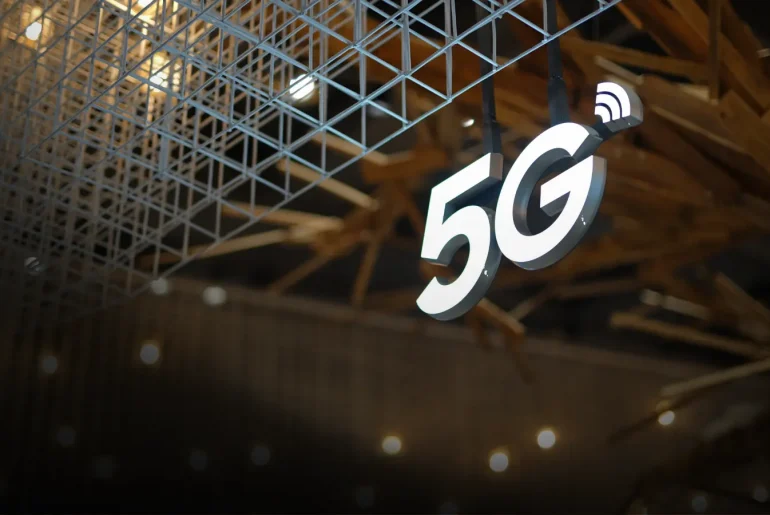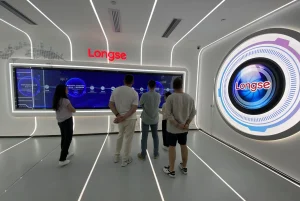5G Tube Filling: Challenges, Network Slicing, and the Global Role of VSaaS
As the world ushers in the era of 5G Slicing. We’re not merely upgrading a telecommunications standard from 4G to 5G. We’re redefining the digital infrastructure upon which economies, cities, and societies are built. With promises of ultra-fast connectivity, real-time responsiveness, and vast capacity, 5G is often seen as the gateway to smart everything: smart cities, smart factories, smart mobility.
But the full realization of this vision is far from automatic.
Behind the gleaming facade of 5G lies a thicket of challenges, both technical and commercial. The metaphor often used in telecom circles is “filling the 5G tube”: the idea that it’s not enough to build an ultra-capable pipeline. It must also be intelligently filled with meaningful, monetizable traffic. The key to this lies in network slicing, and one of the most compelling vertical use cases to fill these slices may come from a surprising source: Video Surveillance as a Service (VSaaS).
The Hidden Weight of Progress: Challenges of 5G Adoption

Rolling out 5G at scale is not merely an engineering feat. It represents a paradigm shift, that demands far more than faster radios or denser antenna grids. It is a systemic transformation that touches the very foundations of telecommunications: business models, operational frameworks, network architectures, and even the social contract around privacy and data.
Unlike previous generational upgrades, 5G introduces not just new technology, but a new logic of connectivity: software-defined, edge-distributed, and cloud-integrated.
This requires reconfiguration across five critical domains:
1. High Infrastructure Costs
The shift from macro towers to dense small-cell deployments in urban areas, alongside the need for robust fiber backhaul and edge data centers, demands unprecedented capital investment.
2. Spectrum Allocation and Regulation
Uneven global policies on mid- and high-band spectrum distribution often entangled in geopolitics create patchwork deployments and delay innovation in certain regions.
3. Integration Complexity
Melding 5G with existing 4G LTE networks adds layers of technical complexity, making seamless handovers and legacy compatibility a constant concern.
4. Monetization Difficulties
Consumer enthusiasm alone cannot justify 5G’s cost. Many operators struggle to identify viable, scalable business models beyond enhanced mobile broadband.
5. Security and Privacy Concerns
With virtualization and distributed network functions, 5G networks present a wider attack surface and demand next-generation cybersecurity paradigms.
These hurdles must be met with strategic foresight. And a key part of that foresight is understanding what fills the “tube” once it’s built.
Slicing the Network: A Tailored Architecture For Fragmented Future

Look closer at network slicing, one of 5G’s most powerful innovations.
What Is 5G Network Slicing?
5G network slicing is a powerful feature of 5G that allows a single physical network to be partitioned into multiple virtual networks, each tailored for different use cases or service requirements.
Let’s imagine 5G as a multi-lane highway. Instead of all traffic sharing the same space, network slicing dedicates different lanes to different types of vehicles, each with its own speed limits, priorities, and rules:
- One lane for fast-moving cars (e.g., video streaming and mobile broadband)
- Another reserved for emergency vehicles (e.g., remote surgery or autonomous vehicles)
- And one for heavy trucks (e.g., IoT devices and smart sensors)
Each of these “lanes” represents a 5G network slice: logically isolated, dynamically adjustable, and purpose-built to serve distinct needs.
Technically, slicing is made possible through virtualization technologies like NFV (Network Functions Virtualization)and SDN (Software-Defined Networking). These tools allow operators to create end-to-end logical networks that run over the same physical infrastructure but behave independently.
Each of 5G slicing can be finely tuned for parameters such as:
- Bandwidth
- Latency
- Security
- Reliability
- Geographic reach
This capability allows telecom providers to serve diverse applications simultaneously: from consumer video to industrial automation to public safety. Without building separate networks.
In essence, network slicing gives 5G the flexibility, efficiency, and scalability required to meet the demands of a hyper-connected world.
No longer bound to a one-size-fits-all approach, network slicing allows operators to partition a single physical infrastructure into multiple virtual networks, each optimized for different requirements. Each slice becomes a self-contained lane of traffic, shaped by the needs of specific applications.
The primary categories of 5G Slicing include:
- Enhanced Mobile Broadband (eMBB). The type suits for bandwidth-heavy tasks like 4K/8K streaming or immersive AR/VR.
- Ultra-Reliable Low-Latency Communication (URLLC). The solution fits for mission-critical applications, including autonomous vehicles or remote surgery.
- Massive Machine-Type Communication (mMTC). It’s ideal for dense IoT environments, like industrial sensors or connected agriculture.
Or like this:
| Slice Type | Use Case | Key Requirement |
|---|---|---|
| eMBB (Enhanced Mobile Broadband) | 4K video, VR/AR | High bandwidth |
| URLLC (Ultra-Reliable Low Latency Communications) | Remote surgery, autonomous vehicles | Ultra-low latency |
| mMTC (Massive Machine-Type Communications) | Smart meters, sensors, agriculture | High device density, low power |
Business Impact:
- Telecom operators can monetize different slices separately.
- Enterprises (e.g., airports, factories) can lease private slices with guaranteed service levels.
- Governments and smart cities can run critical infrastructure on isolated, secure slices.
Yet these slices are only as valuable as the services that inhabit them. That’s where real-world, high-impact applications become essential not just as data generators, but as strategic allies in commercializing the network. Video Surveillance as a Service (VSaaS) stands out as one such ally.
VSaaS: A Global Contender for 5G Monetization
At first glance, video surveillance may not seem like the crown jewel of next-gen networks. But in the context of 5G and its architectural priorities (bandwidth, latency, edge intelligence) it proves remarkably aligned. The modern iteration of surveillance, VSaaS, is no longer a static recording system. It is a dynamic, cloud-based ecosystem of real-time monitoring, AI-driven analytics, and edge decision-making.
VSaaS contributes to 5G goals in several fundamental ways:
Heavy and Predictable Bandwidth Consumption
With a constant stream of high-definition video, VSaaS fits perfectly into enhanced mobile broadband slices, ensuring consistent, revenue-generating data flows.
Edge Integration for Real-Time Insight
From facial recognition to anomaly detection, VSaaS increasingly uses AI at the edge, making full use of 5G’s distributed architecture.
Latency-Critical Applications
For scenarios like city traffic control or emergency response, surveillance systems must operate in near real time. An ideal use case for URLLC.
Horizontal Scalability Across Sectors
Whether deployed across smart cities, airports, or enterprise campuses, VSaaS scales with the network, a strategic asset for telcos looking to bundle services.
Recurring Revenue via the XaaS Model
As-a-Service models offer operators the predictable, subscription-based revenue streams they crave. VSaaS is tailor-made for this transformation.
In sum, VSaaS does not merely benefit from 5G, it helps justify its existence.
Mapping the Global Landscape of VSaaS in the 5G Era

The uptake of VSaaS is not geographically uniform. Its adoption reflects a mix of regulatory readiness, urbanization patterns, and public sector priorities.
In North America and Europe, VSaaS is tightly integrated with public safety initiatives and private enterprise security. Telcos often partner with hyperscalers to offer edge-enabled surveillance with compliance to data regulations like GDPR.
In the Asia-Pacific region, VSaaS is booming. High-density urban centers and state-led smart city mandates create fertile ground for 5G-enabled surveillance. China, South Korea, and Japan are leading with AI-enhanced surveillance tied directly to city infrastructure.
In the Middle East and Africa, mega-projects and smart city developments (such as NEOM in Saudi Arabia) are driving demand for advanced surveillance solutions. Here, VSaaS supports everything from oil & gas monitoring to critical infrastructure security.
Meanwhile, Latin America sees growing adoption in commercial real estate, retail, and urban safety though infrastructure constraints mean mobile-first and hybrid VSaaS deployments are more common.
Is a Tube Worth Filling?
The promise of 5G is not in its capacity alone, but in the intelligence with which that capacity is used. It is a pipe: vast, sophisticated, and expensive. And it must be filled, not with random bits of data, but with services that are high-impact, high-frequency, and high-value.
VSaaS emerges not as a niche use case, but as a foundational pillar of that strategy feeding data into the network, drawing intelligence out of it, and generating stable revenue streams for operators worldwide. It exemplifies how 5G’s capabilities can intersect with real-world needs, from safety and logistics to smart governance.
One company at the forefront of this evolution is Aipix, a cloud-native VSaaS provider built for the 5G era. By combining AI-driven video analytics, real-time streaming, and access control as a service for B2B, B2C and even B2G segment of users, Aipix enables smart surveillance solutions that align perfectly with 5G’s low-latency, high-bandwidth capabilities. Its modular platform supports scalable deployments across smart cities, infrastructure, and enterprise environments. It makes it a compelling partner for operators looking to fill and monetize their network slices intelligently.
In the grand project of building the 5G future, video surveillance is no longer just a watchful eye. It’s a business model, a traffic driver, and a key to unlocking the tube.
Take your role in the transformation – contact us to learn more about VSaaS launching and tubes capitalizing!





